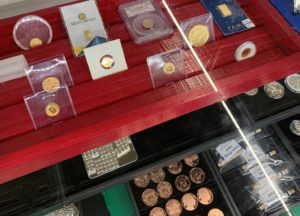The LunaVault paves the way for a sustainable and independent energy future, demonstrating the limitless potential of renewable power systems. The core objective was to reimagine a standard shipping container as a self-contained energy hub, equipped with advanced solar integration, high-capacity batteries, and intelligent power management systems.
The LunaVault: Revolutionizing Off-Grid Power Systems:
This ambitious endeavor transforms a standard 20-foot shipping container into a high-capacity, modular, and off-grid power system capable of supporting diverse energy needs. Designed with flexibility, scalability, and technological sophistication, the LunaVault is a model of efficiency for residential, industrial, and critical infrastructure applications. This blog will explore the intricacies of the LunaVault installation, integration, scalability, and future potential, providing a detailed understanding of what makes the LunaVault a groundbreaking achievement. The LunaVault was conceived as a solution to the growing demand for portable and adaptable off-grid energy systems. From powering remote homes and industrial sites to providing reliable backup power for hospitals and data centers, its versatility is its greatest strength. The installation process was divided into several critical phases, each contributing to the overall functionality and reliability of the system. To prepare the 20-foot shipping container for housing heavy equipment and intricate wiring systems, several modifications were made: Reinforcements were added to ensure the container could withstand the combined weight of batteries, inverters, and solar wiring components. Insulation and HVAC units were installed to maintain a controlled internal environment.
The LunaVault’s core functionality relies on seamless integration of its components, ensuring reliable energy production, storage, and distribution.
• Siemens switchgear, rated for 400 and 600 amps, were installed to manage grid inputs and load outputs.
• Sol-Ark 15K hybrid inverters were configured in parallel, allowing them to efficiently manage energy flow between the solar array, battery storage, and connected loads.
• Discover AES batteries in the AES Slimline enclosure were installed offering compact yet robust energy storage. Equal-length cabling ensured balanced charging and discharging across all units, improving efficiency and longevity.
The solar field pre-wired with an initial capacity of 75 kWh and provisions for expansion up to 120 kW using 168 solar modules. The system was designed to maximize energy capture and ensure seamless integration with the combiner panel and inverters. A Ubiquiti mesh network was installed to provide real-time monitoring and diagnostics, enabling remote management of the system’s performance.
Before deployment, rigorous testing was conducted to validate the system’s performance and address any potential issues. The system was tested by running all six inverters on the Discover batteries. This confirmed balanced load distribution across the inverters. Updates were applied to both inverters and batteries to optimize their performance and compatibility. Minor issues, such as a high-pitched noise from one battery, were identified for further investigation and adjustment. Once testing was completed, the container was prepared for transport to its deployment site in Oklahoma. To ensure safe handling, the batteries were shipped separately, balancing the load of the container during crane loading. The LunaVault was installed on a pre-prepared concrete pad, with conduits and a solar array aligned for seamless integration. Final on-site testing confirmed the system’s efficiency and readiness for operation. The LunaVault’s design is inherently scalable, making it an ideal choice for both current needs and future expansions. The Sol-Ark 15K inverters can operate in parallel, allowing additional inverters to be added as energy demands increase. This ensures compatibility with larger loads and expanded solar inputs. Discover AES batteries are modular, enabling configurations of up to 30 units for increased storage. Each battery cabinet is designed for easy integration, minimizing the need for system reconfiguration during expansions. With provisions for 168 solar panels, the system can scale its capacity from 75 kWh to 120 kW seamlessly, accommodating higher energy production and storage needs.
Each component of the LunaVault is carefully selected and integrated to ensure optimal performance:
Sol-Ark 15K Inverters: These hybrid inverters manage up to 15 kW of AC power each, with advanced MPPT systems ensuring efficient solar energy conversion.
Discover AES Batteries: Featuring lithium-ion technology, these batteries provide reliable, high-capacity energy storage with modular scalability.
Siemens Switchgear: Heavy-duty switchgear ensures safe and reliable power distribution, including grid and load management.
Future iterations of the LunaVault will feature versions with flexible options for larger or smaller battery capacities and inverters, providing an adaptable solution for sites with space constraints. These models will maintain the same advanced battery technology and solar integration but feature fewer inverters, making them suitable for sites with space constraints or lower energy demands. Throughout the project, several key insights were gained: The arrangement of components can be further refined to improve accessibility and compactness. Regular updates have enhanced system performance, and ongoing improvements will address emerging needs and compatibility issues. Future designs will incorporate IoT-based controls, enabling automated energy management and smart grid compatibility. By integrating advanced technology, modular design, and intelligent monitoring, the LunaVault delivers a flexible, scalable, and future-proof energy system and adaptable solution for a variety of applications. As energy demand continues to grow, projects like LunaVault’s forward-thinking design ensures it will remain at the forefront of sustainable power solutions, leading the way toward a cleaner and more independent energy future.













